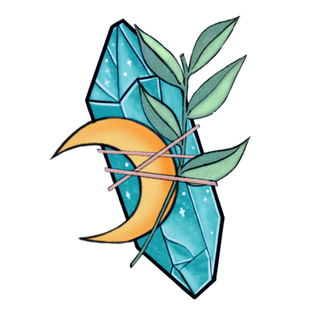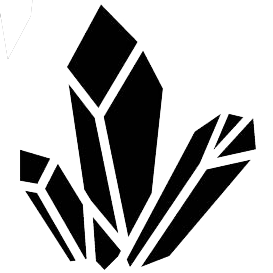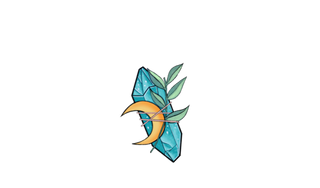Lapis LazuliSphereExtra Quality Nice dark blue with beautiful bands of gold Information: Handmade gemstone spheres make these one of a kind pieces of wearable, decorative or architectural art truly unique. The sphere as a shape is an ancient and universal symbol that represents unity, completeness, infinity - the whole universe. Weight range: 250g to 300g Category: Rock Chemical Formula: (Na,CA)8(AlSiO4)6(SO4,S,Cl)2 Colour: blue, green hue Class: Silicate Group: Isometric Formations: dodecahedral Lazurite crystals, usually massive as a rock (lapis lazuli) Lustre: dull, translucent to opaque Cleavage: none Varieties: Lazurite Brief Description: Lapis Lazuli is a rock typically composed of Lazurite, Calcite, Pyrite and Sodalite. Lazurite content is greater than 25% of Lapis Lazuli rock. Lazurite is a sodium calcium aluminium silicate sulphur sulphate mineral. Lazurite crystals are rare, but stunningly blue, often growing from a Calcite or Limestone matrix. Lapis Lazuli is characterised by a deep blue colour, with flecks of Pyrite; the less black or white streaks in the rock, the more valuable the stone. Lapis Lazuli is used in the jewellery trade, and is often carved into ornamental sculptures. Mythology: Lapis lazuli has been mined in Afghanistan and exported to the Mediterranean world and South Asia since the Neolithic age.Lapis lazuli beads have been found at Mehrgarh, a neolithic site near Quetta in Pakistan, on the ancient trade route between Afghanistan and the Indus Valley, dating to the 7th millennium. Lapis was also used in ancient Mesopotamia by the Akkadians, Assyrians, and Babylonians for seals and jewelry. In the Mesopotamian poem, the Epic of Gilgamesh (17th-18th Century BC); one of the oldest known works of literature; lapis lazuli is mentioned several times. The Statue of Ebih-Il, a 3rd millennium BC statue found in the ancient city-state of Mari in modern-day Syria, now in the Louvre, uses lapis lazuli inlays for the irises of the eyes. Usage: Lapis takes an excellent polish and can be made into jewelry, carvings, boxes, mosaics, ornaments, and vases. It was also ground and processed to m
Lapis LazuliSphereExtra Quality Nice dark blue with beautiful bands of gold Information: Handmade gemstone spheres make these one of a kind pieces of wearable, decorative or architectural art truly unique. The sphere as a shape is an ancient and universal symbol that represents unity, completeness, infinity - the whole universe. Weight range: 250g to 300g Category: Rock Chemical Formula: (Na,CA)8(AlSiO4)6(SO4,S,Cl)2 Colour: blue, green hue Class: Silicate Group: Isometric Formations: dodecahedral Lazurite crystals, usually massive as a rock (lapis lazuli) Lustre: dull, translucent to opaque Cleavage: none Varieties: Lazurite Brief Description: Lapis Lazuli is a rock typically composed of Lazurite, Calcite, Pyrite and Sodalite. Lazurite content is greater than 25% of Lapis Lazuli rock. Lazurite is a sodium calcium aluminium silicate sulphur sulphate mineral. Lazurite crystals are rare, but stunningly blue, often growing from a Calcite or Limestone matrix. Lapis Lazuli is characterised by a deep blue colour, with flecks of Pyrite; the less black or white streaks in the rock, the more valuable the stone. Lapis Lazuli is used in the jewellery trade, and is often carved into ornamental sculptures. Mythology: Lapis lazuli has been mined in Afghanistan and exported to the Mediterranean world and South Asia since the Neolithic age.Lapis lazuli beads have been found at Mehrgarh, a neolithic site near Quetta in Pakistan, on the ancient trade route between Afghanistan and the Indus Valley, dating to the 7th millennium. Lapis was also used in ancient Mesopotamia by the Akkadians, Assyrians, and Babylonians for seals and jewelry. In the Mesopotamian poem, the Epic of Gilgamesh (17th-18th Century BC); one of the oldest known works of literature; lapis lazuli is mentioned several times. The Statue of Ebih-Il, a 3rd millennium BC statue found in the ancient city-state of Mari in modern-day Syria, now in the Louvre, uses lapis lazuli inlays for the irises of the eyes. Usage: Lapis takes an excellent polish and can be made into jewelry, carvings, boxes, mosaics, ornaments, and vases. It was also ground and processed to m

JOIN THE CRYSTAL CLUB
Get 20% Off Your Purchase
Get weekly updates on:
Upcoming events & promotions
New arrivals + back in stock
Exclusive online deals







